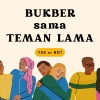The world was in shock when Belgium has officially approved the use of Euthanasia Procedure in the case of a 9-year-old patient who had brain tumor in 2018. This case has since become the youngest case of Euthanasia use in the world. They were a lot of discussion and debates revolving this topic since it happened by doctors, medical professionals and also politicians all around the globe. Making the term 'Euthanasia' now seemingly pretty controversial and quite sensitive to discuss by the general public.
So, what is actually Euthanasia? If we look in detail, this term of procedure is already quite common to be heard and discussed in the world of medical professionals where it basically used to define a deliberate action done by the doctors or medical professionals to end someone's life to relieve their pain or suffering by medical considerations which can be caused by a disease or condition that cannot be healed or medicated. In general, this medical practice or procedure is done by the request of the patient's relatives or also by the relating patient itself. The public is already quite familiar with the active term of Euthanasia where the doctor or the medical professionals deliberately gave the patients some kind of dangerous or hazardous substances to end the patient's life. But in reality, there are many different types of Euthanasia procedures by which is quite different from one another. The first type of Euthanasia is voluntary which involves the consent of the relating patients to conduct this procedure. In this type of procedure, the patient must understand the procedure and fully aware of what’s about to happen. This procedure is already quite legal in a number of countries in the world such as Belgium and also Netherlands. Another type of Euthanasia is quite different from the first type where the consent was given by the patient's close family or relatives due to a number of factors or condition which for example is when the patient is unconscious or in a deep coma. This term is called non-voluntary and usually involves passive Euthanasia which is another type of this procedure where it involves the revocation of life support or treatments by the medical professionals.
If we look back at this procedure locally, there has been a number of Euthanasia procedure cases that happened in Indonesia. One of this case of Euthanasia happened in 2004 when the husband of a woman named Agian Isna Nauli who has suffered stroke and was unconscious for months after giving birth requested doctors to give his wife Euthanasia procedure due to the husband's financial situation. However, the doctors argued and refused to approve her husband's request due to the fact that medically, it could not be said that Mrs. Nauli was in a coma even though she could not make outside contact physically, so there is no reason for euthanasia even though the husband had given the consent for this procedure. Since then, this case has raised many questions about the implementation and also the status of Euthanasia in Indonesia both in the scope of law and also medical ethics.
If we study and look closely about this procedure from the medical professional ethics, the use of Euthanasia procedure has been a long-time dilemma alongside with abortion since it is against the Hippocratic Oath that must be done by all the doctors and also medical professionals globally. This Hippocratic Oath is used as a guideline for doctors and also medical personnel and additionally been used as a code of ethics by all doctors in the world that acts as a collective agreement where they must always respect and provide the best for the patients they care for in all cases or procedures. If we look in detail, it is clearly stated in the Oath, "I will not give a lethal drug to anyone if I am asked, nor will I advise such a plan.” What we can understand from this sentence alone, we can see that this medical guideline has explicitly contradicts the use of Euthanasia where this procedure will not make doctors as a 'healer' but moreover as a 'killer', that's why according to this Oath, this procedure is not considered as a medical practice. Furthermore, the World Medical Association has held The Declaration of Geneva in September 1948, which gave birth to the doctor's obligations which have been stated in as follows: "I will maintain the utmost respect for human life from the timeof conception, even under threat, I will not use my medical knowledge and ability in contrary to the laws of humanity" (1948).
Similar with this existing global obligation, there are some conventions or forum such as The 2nd National Conference on Medical Ethics which was held locally in 1981. According to this convention on the pronunciation of the doctor's oath in article 7, it is stated "I will always prioritize the health of the patient," as well as in article 10 which states that, "I will obey and practice the Indonesian medical code of ethics." On those articles alone, we can see that the use of Euthanasia Procedure is strictly prohibited ethically in Indonesia. In supporting to those articles and arguments, we can also refer to some articles from the Indonesian Medical Code of Ethics (KODEKI) which became effective on October 29, 1969.
Inside the Article 5 of the KODEKI, it is stated that every act or advice from a doctor that the result may weaken the patient's psychological and physical endurance or condition must require the consent of the patient or the close member of family where the act is given only for the benefit of the patient. Another key thing to remember is that inside Article 29 of 2004 concerning Medical Practice, this regulation also warns doctors or medical professionals to pay close attention to the importance of a patient's consent prior taking action. What that means is that the patient's consent should be asked after the patient has already received a complete explanation of the procedures that is going to be done by the doctors. The doctor's explanation then should at least contain information about the diagnosis and procedures in regards to the medical action that's going to be performed, the purpose of the medical action, other alternative measures, risks, complications that may occur, as well as the prognosis for the action taken. These articles shows the obligation that must always be done by doctors or medical professional in protecting the patient's life and safety.
What's more if we elaborate, we can see that a doctor is prohibited from being involved, involving themselves, or is not allowed to end the life of a person who's according to science and knowledge may not be cured, which in other words is Euthanasia. If we examine this articlefor instance during an operation procedure, even if in reality the doctors is forced to make a risqué decision upon doing an operating procedures, the doctors or medical professionals should always put forward the patient's safety and protection even if the chances of full recovery are slim (KODEKI, 1993:24-27). That's why we can see from the parable example that Euthanasia Procedure is actually prohibited from the ethics of the professional medical perspective.
Moving on, before we dive further from the legal perspective of this procedure, we first have to understand our country's legal background on the making of the law in our country. If we widen our legal perspective, we can see that our country's legal aspect came from many traits of the society such as customs or adat, religions, ethics, social values and so forth. Not to mention that if we seek further from our country's history, Indonesia has always been vocal about its support towards this so-called human rights which is already very familiar to the general public. We must understand and acknowledge that human rights itself was designed to ensure the longevity or the continuity of human life such as the right to live which is contained inside "The Universal Declaration Of Human Rights" which was held by the United Nations and signed on December 10, 1948 in Paris. This right alone shows that every human deserves to have safety, livelihood, and also freedom, that's why it is important to protect the life of every human being. This declaration has become a sign of recognition of human rights in the world.
If we put it in a perspective, if we acknowledge the right to die as a fundamental right, then it will lead to the logical consequence which is if the doctor refuses the patient's request who is currently experiencing great pain from an incurable illness, means that the doctor or the medical professional has violated the rights of others or in other words if everyone has the right to die (involving other people), it will mean that a doctor is considered obliged to obey the patient's or their intention to die using this method of procedure. And if the doctor decided to refuses to end the patient's request by speeding up his death, then the doctor may be deemed to have violated human rights. That is why we cannot acknowledge the right to die as one of the fundamental of human rights since it will cause problems and will make things more complicated and complex.
Reflecting on the results or the content of The Universal Declaration of Human Rights, our country has embraced a lot of values that came from this declaration such as incorporating human rights principles and also our country's social background traits into the fundamentals of our country such as in Pancasila, the 1945 Constitution and also the Law no. 39 year 1999 with good will realization. At its principle, the right to live is a fundamental right or human right of every human being. Our Constitution, namely the 1945 Constitution protects the right to live inside the Article 28A which states that everyone has the right to live and has the right to defend life. Reflecting back to this procedure, it is already clear that it contradicts with the value of human rights itself. We can see that the use of Euthanasia procedure is already prohibited from our country's legal background.
After understanding our country's legal background, therefore we can understand and acknowledge why all of our country's regulation or positive law are actually pro-life or prioritize human rights, where acts that involves killing or ending another person's life is highly avoidable to do here in Indonesia. We can identify this prohibition from one of which is from the Article 344 of our Indonesian Penal Code where it is stated, "Any person who takes the life of another person at the express request of their own is punished by a maximum imprisonment of twelve years." What we can conclude and interpret from this article is the regulation of the use of Voluntary Euthanasia Procedure which needs the patient's consent before proceeding to this procedure. Moreover, on the context of the patient's decision or intention towards the act of this procedure, we can refer to article 345 which prohibits, "Anyone who deliberately encourages another person to commit suicide, assists them in that act, or provides means for them to do so, shall be punished by a maximum sentence of four years if that person commits suicide." What we can see and understand from both of these provisions, is that what's regulated explicitly is actually only Active and Voluntary form of Euthanasia Procedure. If we highlight the elements of this regulation, to fulfil the legal element inside both of this articles, the procedure itself must be done with the request of the patient itself, making the article 344 and 345 of the Penal Code difficult to categorize Passive Euthanasia as a criminal act, because as we can see in reality, in general the act of Passive Euthanasia procedures occurs more often in this country rather than Active Euthanasia, which does not match the legal elements that is contained inside those articles.
Then again if we take a look further inside of our Penal Code, we can come across Article 359 which regulates, "Any person who due to his/her negligence, causes the death of another person, shall be punished by a maximum imprisonment of five years or a maximum imprisonment of one year." And also in relation to Article 338 which regulates, "Anyone who deliberately seizes the life of another person, will be threatened with murder with a maximum imprisonment of 15 (fifteen) years." In other words, we can that these two articles can be used as a 'reminder' for doctors and medical workers to be mindful upon dealing with this kind of cases or this procedure and also to not urge someone to perform these procedure as a way out since it is clear that inside Article 338 that purposive murder is strictly prohibited.
Talking about article 359 specifically, we can identify two of the elements inside this article which is "due to negligence" and also "causes the death of a another person." When we elaborate about the definition of negligence itself, we can see that there are two classifications which are deliberate negligence and also accidental negligence where both of these negligence can cause harm to the patient. Taking link to the procedure of Euthanasia, the offender in this case has already suspected the emergence or the emersion of a result or cause of this act or procedure which is death of the relating patient either directly or gradually. This Article 359 can be elaborated to define the prohibition inside the context of Passive Euthanasia procedure itself since it involves the revocation of life support that is done intentionally. If we see the sanctions of the negligence inside this Penal Code, the deliberate negligence will of course have the heavier penalty towards the offender since the act was done purposively and consciously. We can also see that the doctors itself can also be found guilty upon assisting the patient to realize this act of procedure. With this in mind, based on the following regulations that had been discussed previously, we can conclude that both Active and also Passive Euthanasia Procedures are strictly prohibited to be done in Indonesia.
All things considered, Euthanasia Procedure has been a global aged question which became an ethical and moral dilemma in the ethical code of health professionals since doctors and medical professionals are faced with a difficult choice between obeying or not obeying requests from the patient/family directly and indirectly. Both Passive Euthanasia and Active Euthanasia are a challenge to be talked about in the scope of ethical, moral and also legal grounds in Indonesia. Likewise in the medical profession, the case of Euthanasia Procedure is prohibited ethically since it is in contrary with the Indonesian Medical Code of Ethics (KODEKI) and also inside the Hippocratic Oath which it is stated that: "A doctor must always remember the duty to protect the life of the human being." And also referencing from the existing legislation that is contained in the Indonesian Criminal or Penal Code, we can conclude that either Passive and Active Euthanasia are strictly illegal to be done in Indonesia and should not be done both from the legal aspect and also ethically.
BIBLIOGRAPHY
Academic Department. “Euthanasia.” Euthanasia - MU School of Medicine. University of Missouri. Accessed March 25, 2021. https://medicine.missouri.edu/centers-institutes-labs/health-ethics/faq/euthanasia.
Dennis, Tom Emburry. “Terminally-Ill Children Aged 9 and 11 Become Youngest Ever to Be Euthanised.” The Independent. Independent Digital News and Media, August 7, 2018. https://www.independent.co.uk/news/world/europe/children-euthanasia-belgium-youngest-killed-terminally-ill-cfcee-a8481311.html.
detikNews. “Kasus Ny Agian, RS Telah Lakukan Euthanasia Pasif.” detiknews, October 16, 2004. https://news.detik.com/berita/d-225608/kasus-ny-agian-rs-telah-lakukan-euthanasia-pasif.
Effendi, A. Masyhur. Dimensi Dinamika Hak-Hak Asasi Manusia Dalam Hukum Nasional Dan Internasional. Jakarta: Graha Indonesia, 1994.
Ferreira, Nuno. “Revisiting Euthanasia: A Comparative Analysis of a Right to Die in Dignity.” SSRN Electronic Journal 4 (November 2005). https://doi.org/10.2139/ssrn.1293287.
Hastuti, Noor Tri, and Ratna Winahyu Dewi. “EUTHANASIA DALAM PERSPEKTIF HUKUM PIDANA, ETIKA PROFESI KEDOKTERAN DAN HAK ASASI MANUSIA.” Perspektif 10, no. 2 (April 27, 2005): 111–13. https://doi.org/10.30742/perspektif.v10i2.319.
Holland, Kimberly. “Euthanasia : Understanding the Facts.” Healthline. Healthline Media, June 1, 2019. https://www.healthline.com/health/what-is-euthanasia.
Indonesia, Majelis Kehormatan Etik Kedokteran. Kode Etik Kedokteran Indonesia Dan Pedoman Pelaksanaan Kode Etik Kedokteran Indonesia. Jakarta: Ikatan Dokter Indonesia, 2004.
Indonesian Criminal Code (KUHP).
Indonesian Law No. 29 of 2004 concerning Medical Practice.
Kennedy Institute of Ethics. “Physicians, the Morality of Euthanasia, and the Hippocratic Oath.” Bioethics Research Library. Georgetown University, 2019. https://bioethics.georgetown.edu/2015/07/physicians-the-morality-of-euthanasia-and-the-hippocratic-oath/.
Morrow, Angela. “What Is Euthanasia and Physician-Assisted Suicide?” Edited by James Lacy. Verywell Health, November 18, 2020. https://www.verywellhealth.com/what-is-euthanasia-1132209.
Prakoso , Djoko, and Djaman Andhi Nirwanto. “Euthanasia.” In Hak Asasi Manusia Dan Hukum Pidana . Jakarta: Ghalia Indonesia, 1994.
Rosen, D. “Helping Certain Patients End Their Lives.” Canadian Medical Association Journal 184, no. 18 (December 11, 2012): 983–84. https://doi.org/10.1503/cmaj.120089.
United Nations. “The Universal Declaration of Human Rights (1948) .” Together Against Trafficking in Human Beings . European Commission, September 11, 2014. https://ec.europa.eu/anti-trafficking/legislation-and-case-law-international-legislation-general-declarations/universal-declaration-human_en#:~:text=The%20Universal%20Declaration%20of%20Human%20Rights%20(UDHR)%20was%20adopted%20by,all%20human%20beings%20are%20entitled.
The 1945 Constitution of the Republic of Indonesia.
The World Medical Association. In Declaration of Geneva. Geneva, Switzerland: World Medical Association, 1983.











